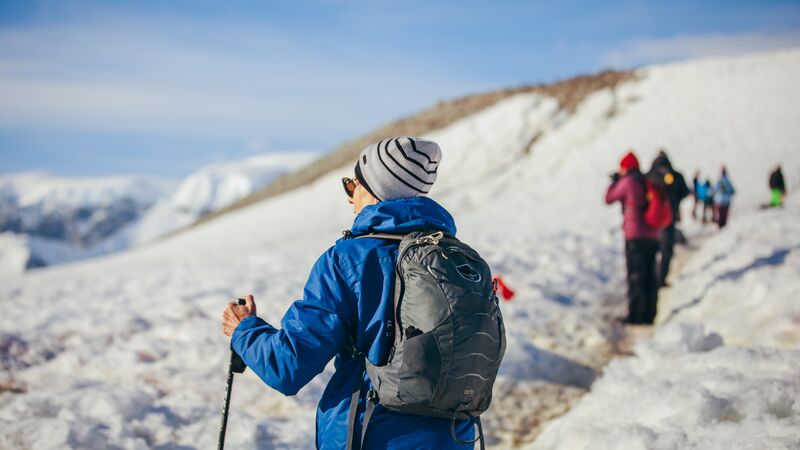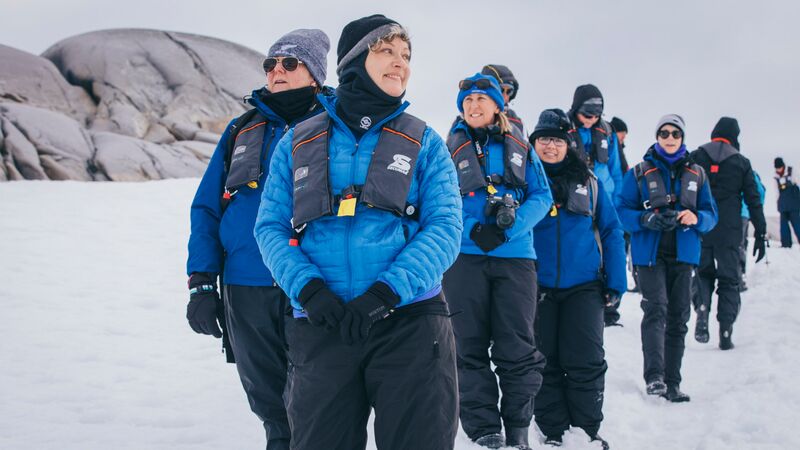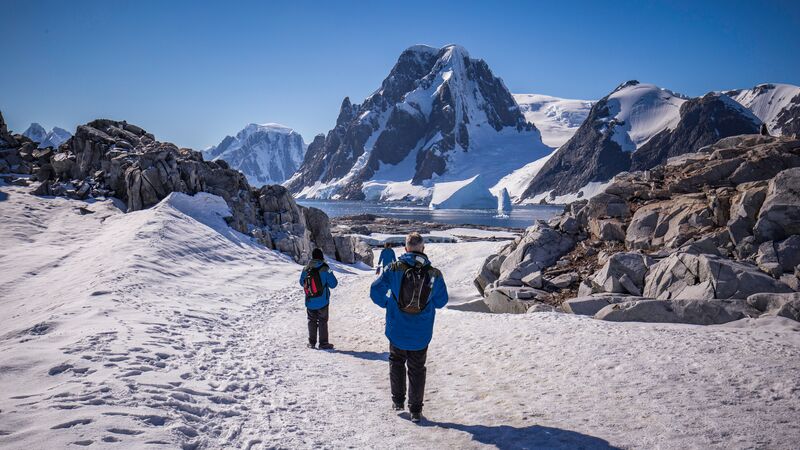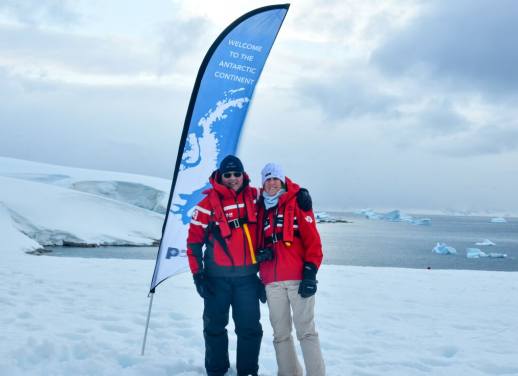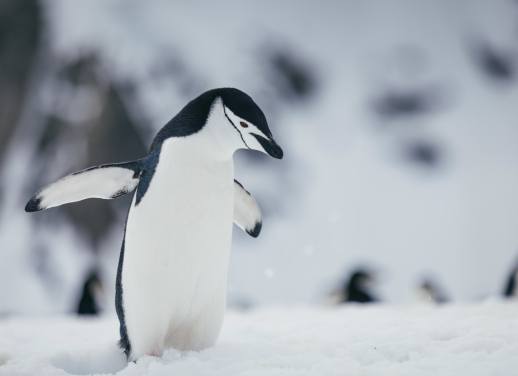How do you pack for a cruise to Antarctica, one of the coldest, windiest, driest, remotest places on earth? No prizes for guessing that a ball gown isn’t on the packing list.
The first rule of packing for an Antarctica cruise is to pack early. Antarctica is one of the most unpredictable places in the world, with little-to-no ability to buy anything while you’re there. This is a recipe for disaster if you’re not a tactical packer, so it’s important to allow enough time to borrow or buy anything you don’t own. Pack the night before your flight and you’re doomed to board your ship with mismatched gloves, no underwear, and a solitary shoe.
Here’s a handy guide to packing for an Antarctica cruise.
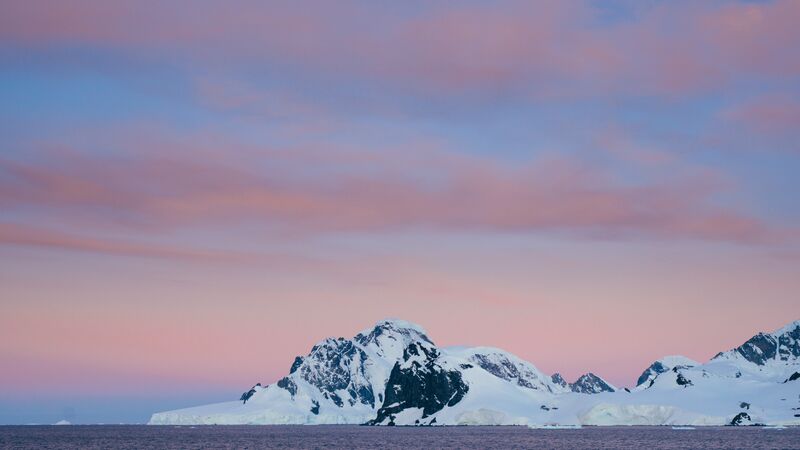
1. Layers
While it’s tempting to pack heaps of bulky sweaters and overcoats, what you really need is a solid combo of short and long-sleeved tops (some thermal, some not). Your ship will be pretty toasty, so having layers to peel off when on board (and put back on when heading out on the deck) is smart.
Layering is generally thought of in three stages: your base layer, mid-layer, and outer layer.
Base layers
You will definitely appreciate a thermal base layer on an Antarctic cruise, and wool or a wool blend is best (the more wool, the warmer you’ll be). Cotton tends not to be as good as a base or mid-layer as it has poor moisture-wicking properties, which means moisture – such as sweat – will sit against your skin and cool your body temperature.
Mid-layers
Go for a poly blend or fleece, and make sure it’s not too fitted so your base layers will all fit snugly underneath. Multiple thin layers over your thermal base (to allow for adjusting to conditions) are better than thicker layers. However, when you’re sitting in a Zodiac, it can get pretty cold, so make sure you have one fleece that you can put on for when it’s really frosty.
Outer layers
One rule for outer layers: make sure they’re 100% waterproof! Depending on which ship you’re travelling on, you’ll either be provided with a jacket to keep or borrow. It’s also essential that you have a pair of insulated, waterproof pants to slip over your bottom half and your boots. You’ll be much more comfortable during shore excursions and kicking about on deck looking for whales.
2. Footwear
Standard hiking boots won’t cut it for an Antarctica adventure. You’ll need a pair of muck boots instead, as they’re designed to deliver grip and performance on snow and ice while keeping your feet warm and dry. We’ll provide you with a pair of muck boots for the duration of your voyage.
You’ll also need pair of comfy shoes for when you’re relaxing on the ship, and maybe a pair of runners if you fancy using the onboard gym.
3. Gloves
When you’re in Antarctica, it’s ESSENTIAL you look after your hands, head and feet. Frostbite is never fun. We suggest layering up your gloves with a polyester blend base, and a waterproof top layer (it’s worth getting two pairs of each, in case a pair goes missing or gets wet. If you’re a photographer, think about packing a fingerless pair too, or investing in gloves with sensor fingertips so you can still use your phone or camera screen.
4. Tight-fitting beanie
Loose hats are a disaster in Antarctica – the wind is so ferocious it can rip hats off unsuspecting heads in seconds. Show that wind who’s boss and take a beanie that fits really snugly on your head, and make sure it covers your ears. In fact, pack two hats, just in case (plus, beanies are really your only opportunity to express your fashion sense).
5. Neck gaiter
It’s important to keep your neck covered when you’re on deck or out on land excursions. Scarves tend to unravel and/or get caught in the Velcro on your jacket, so a warm neck gaiter will keep you snug as a bug.
6. Socks
We suggest wearing two pairs of socks each time you head out: a thin, poly-blend against your skin and a thick woollen outer layer. When in doubt, pack more socks. Your thicker socks will get wet while you’re out on shore visits, so having a few pairs to rotate is a good move. Your thinner socks are perfect for when you’re ship-bound. You’ll be warm and sheltered when eating in the dining room, listening to lectures and reading in your cabin, so your thick woolly socks are overkill when you’re not outside.
7. Sun protection
Yep, the sun shines in Antarctica and you’ll be mighty sorry if you get burned by it. Don’t forget to pack your sunglasses (with UV protection), broad-spectrum sunscreen, and SPF lip balm.
8. Moisturiser
Windy and dry conditions mean your skin will resemble a lizard’s if you don’t moisturise. Unless you want to come home looking like Rango, slather it on every day while you’re away.
9. Seasickness medication
 Seasickness is something many people fear when it comes to an Antarctic cruise – particularly when it comes to crossing the Drake Passage. Whether you’re a seasoned sailor accustomed to big swells or someone who goes green at the gills on a stationary commuter ferry that hasn’t even left port yet, seasickness doesn’t discriminate. Anti-nausea medication can be a bit hit or miss, but being armed with options when you’re feeling queasy is helpful.
Seasickness is something many people fear when it comes to an Antarctic cruise – particularly when it comes to crossing the Drake Passage. Whether you’re a seasoned sailor accustomed to big swells or someone who goes green at the gills on a stationary commuter ferry that hasn’t even left port yet, seasickness doesn’t discriminate. Anti-nausea medication can be a bit hit or miss, but being armed with options when you’re feeling queasy is helpful.
Before your journey, speak to your doctor about seasickness or anything else that might be worrying you. If you’re asthmatic, diabetic or living with other health conditions, ensure you’ve got all of your regular medications packed. While your ship may stock some basics, it’s not a floating pharmacy so it’s worthwhile to double (even triple) checking your medication is in your luggage before leaving. The same goes for sanitary items.
10. Entertainment
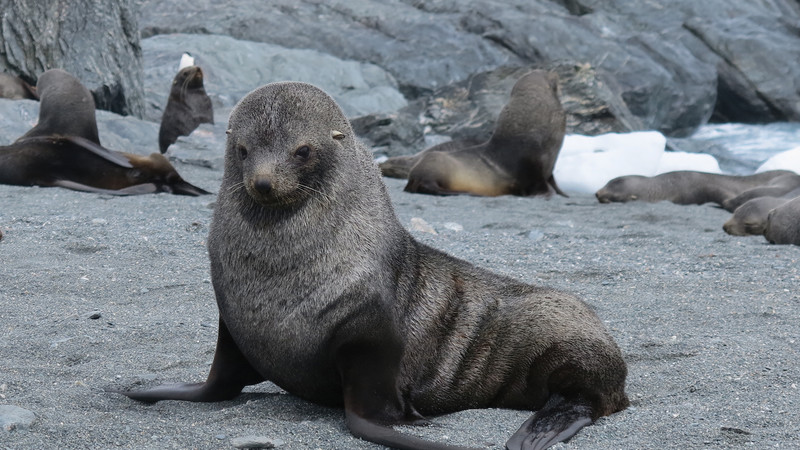
Sure, the adorable antics of penguins and the slightly terrifying smiles of leopard seals are scintillating whatever the time of day, but it’s a good idea to pack some of your own entertainment for those times you need to retreat to your cabin (probably during the Drake Passage crossing). Consider bringing:
- a good book or eReader
- a smartphone loaded full of tunes and podcasts
- noise-cancelling headphones – in storms and high seas ice-breaking ships can be noisy places, so distracting yourself with some calming tunes is a nifty way to get through it
- a notebook and pen to document your journey – in years to come you’ll enjoy reflecting on your trip. Who knows, you might even turn your notes into a bestseller!
11. Other items to pack for an Antarctic cruise
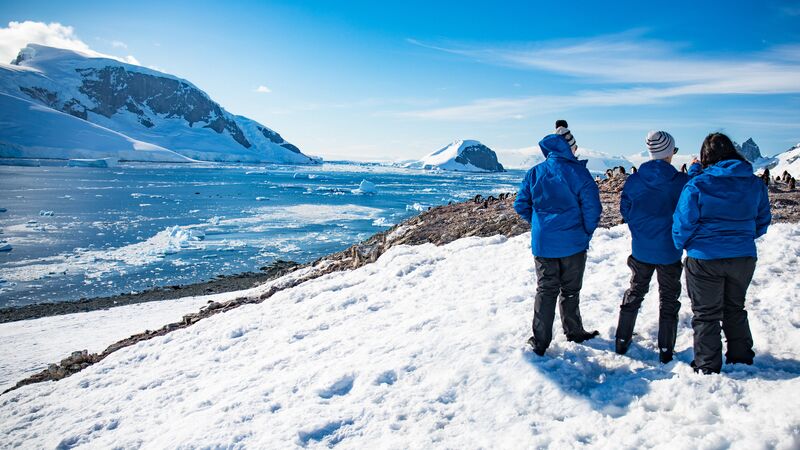
Needless to say, once you’re down south you won’t be able to stop at the shops to buy anything that you’ve forgotten. So here are some other bits and pieces worth bringing along:
- If you’re into photography, bring your camera, spare batteries and SD cards
- Reusable water bottle – bottled water is so 1990s (and not in a good way); reduce single-use plastics by bringing a refillable canteen
- Wet bags and waterproof cases for cameras and other devices – handy when hopping into (and out of) Zodiac boats and kayaks for shore excursions
- Heavy-duty garbage bags – useful for separating soggy clothing from the rest of your luggage
- Zip lock bags – good for stashing rubbish while out on shore excursions (because the karmic ramifications of littering in Antarctica are really harsh)
- Binoculars – if you’re interested in knowing if that’s a big rock or an elephant seal in the distance, bring your own binoculars
- Cash/credit card – if you’re lucky enough to make a landing at Port Lockroy, the post office and gift shop is just about the only spot to shop in Antarctica, so don’t forget some money or a credit card to send a postcard or buy a stuffed penguin. All proceeds go towards the upkeep of the station
- Ear plugs – light sleepers should bring ear plugs to counteract snoring cabin mates and noises ships make when breaking through the high sea or ice.
And most importantly, pack some good, old-fashioned reverence for Planet Earth as you’re about to experience one of the greatest journeys of all time.
Ready for the journey of a lifetime? Explore Antarctica on an Intrepid adventure.

